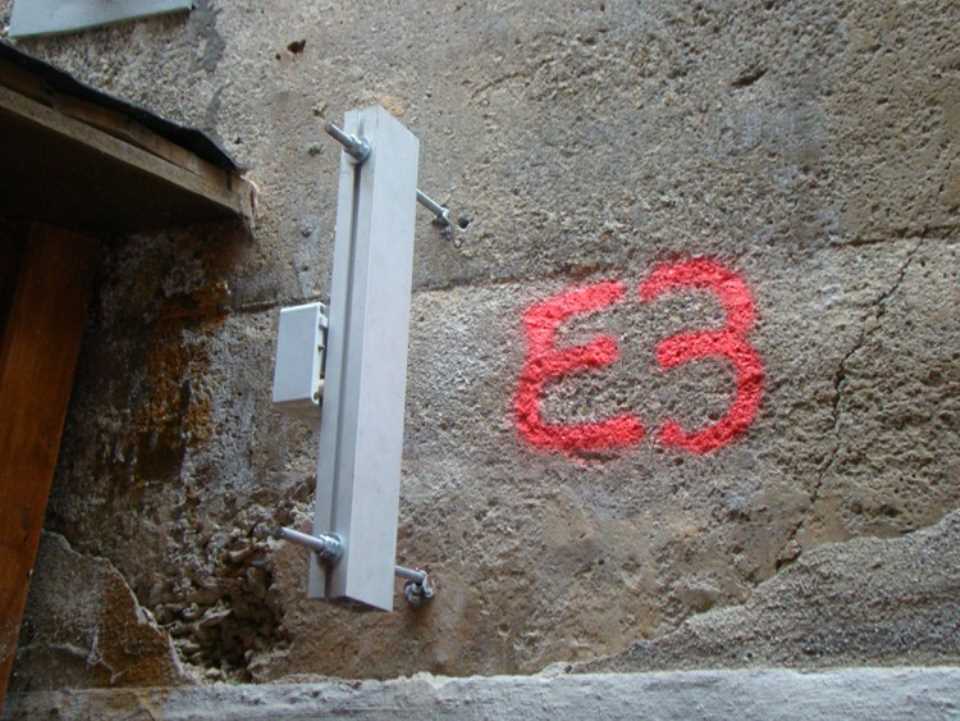Font de la Vall building instrumentation (Aixirivall)
 The building had previously been evicted due to signs of movement in the earth retaining wall located behind it on the mountain side.
The building had previously been evicted due to signs of movement in the earth retaining wall located behind it on the mountain side.The land retaining wall has a total height from about 18 m coronation. This is an old retaining wall with a total of about 6 rows of anchors and drains drilled at different levels and at different times in specific areas. On November 12 the building was ongoing drilling to implement new drainage.
The Wall had a strong shift and pumping as well as cracking open new very important. The above conditions were especially significant at a height of about 12 m below the crest level of the wall in which it was found falling fragments of concrete lining of the wall and the wall as a result of movements.
He then proceeded to their instrumentation to observe the evolution of the ground motions in order to provide for a possible collapse of the wall and can give early enough warning to evacuate the residents of the adjacent houses and cut traffic the area. Subsequently, the area has continued auscultating during wall stabilization tasks as the poor state of the wall could cause a collapse of the same due to the planned works.
In total 7 are installed tilt sensor units Boart Longyear house divided into three sections. Each of the profiles has two electrolevels located at different heights from the wall. Besides, we have installed electrolevels.
Installed by Euroconsult a total of 7 pairs of nails deformetrics.
Inclinometers were installed three 30 m each that aim to control the evolution of displacements and strains in the ground behind the retaining wall and to detect the presence or absence of a fracture surface in depth.
Also conducted a survey with tube piezometric to know the evolution of the water table in the area.
The aim of the topographic control is to monitor ground settlement or movement of different control points located within the study area. In total we have established 23 bases or survey control points.
It has also installed a number of fissurimeter (strips) to observe the evolution of the cracks, both within the wall as in neighboring buildings.
Having different observation points distributed in the study area and have different systems auscultation is a good guarantee for diagnostics, regarding the possible overall mobility of the wall or on the mobility of localized areas and to detect reactivated or allowing movement fades somewhat limit the risk of collapse of the wall.








